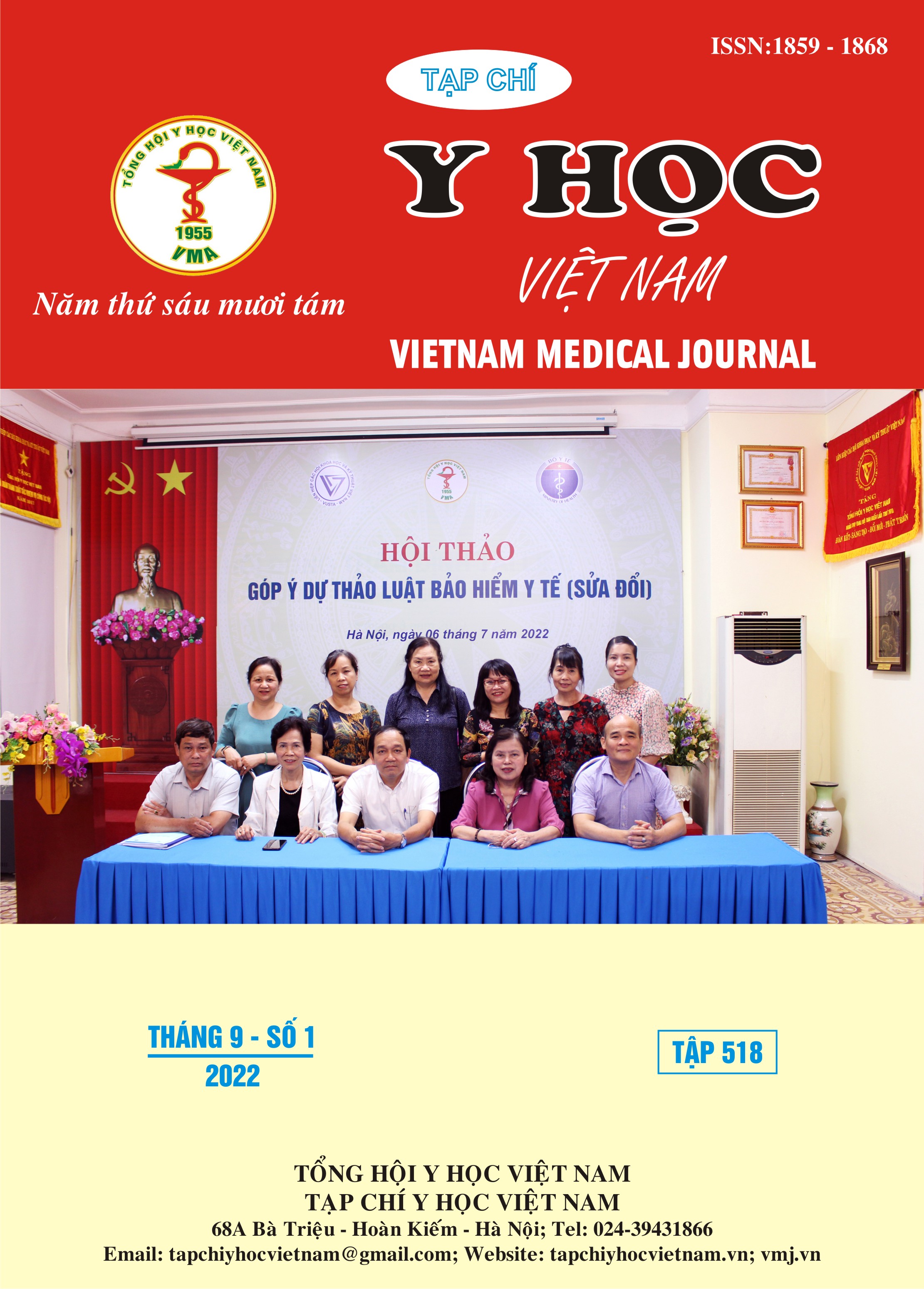THE CLINICAL AND RADIOGRAPHIC FEATURES OF ZYGOMATIC FRACTURES AT VIET DUC UNIVERSITY HOSPITAL IN 2021 - 2022
Main Article Content
Abstract
Objectives: To describe the clinical and radiographic features of patients with zygomatic fractures diagnosed and treated at Department of Maxillofacial, Plastic and Aesthetic Surgery, Viet Duc University Hospital in 2021-2022. Subjects and methods: Applying a cross – sectional study on 305 patients suffering from zygomtic fractures, were treated at Department of Maxillofacial, Plastic and Aesthetic Surgery, Viet Duc Hospital from 1/2021 – 3/2022. The patients were analysed medical story, clinical examination and taken x-ray to recognize the study indicators. Results: The study subjects with an everage age of 30,5±11,6 years old, with a male/female ratio of 6,8, the main cause of traffic accidents accounted for 94,8%. Clinical features: sharp pain at the fracture site is the most common clinical sign (92,8%), followed by soft tissue swelling (91,8%), bruising around the eye socket (90,8 %), bone disruption (82,6%), and concave cheekbones (69,5%). Radiographic: CT scanner film is used 100% of the time. The classification of zygomatic fractures by Knight – North: simple arch fractures accounted for 3,9%, non-displaced zygomatic fractures accounted for 2,3%, unrotated body fracture accounted for 29,2%, laterally rotated body fractures accounted for 23,6%, medially rotated body fractures accounted for 28,5%, complex fractures accounted for 12,5%. The most common combined facial injuries are sinus (93,1%), facial wounds (57,7%), and maxillary fractures (36,1%). Other organ injuries combined with traumatic brain injury accounted for the highest rate (36,1%), limb injuries accounted for a relatively high rate (24,3%), chest trauma was 6,9%, abdominal trauma was 2,3%, and spinal injury was 1,6%. Conclusions: Zygomatic fractures are most common in young men between the ages of 16 and 30, with traffic accidents being the leading cause. Clinical symptoms are frequently diverse and fully detectable on a CT scan. Sinuses, facial wounds, and maxillary fractures are the most common combined facial injuries. Zygomatic fractures is frequently associated with organ damage, such as traumatic brain injury and limb trauma.
Article Details
Keywords
zygomatic fractures, Viet Duc hospital
References
2. Rothweiler R, Bayer J, Zwingmann J, et al. Outcome and complications after treatment of facial fractures at different times in polytrauma patients. Journal of Cranio-Maxillofacial Surgery. 2018;46(2):283-287.
3. Trương Mạnh Dũng. Nghiên cứu lâm sàng và điều trị gãy xương gò má – cung tiếp [Luận án tiến sĩ Y học], Đại học Y Hà Nội; 2002.
4. Hwang K, Kim DH. Analysis of zygomatic fractures. J Craniofac Surg. 2011;22(4):1416-1421.
5. Ungari C, Filiaci F, Riccardi E, Rinna C, Iannetti G. Etiology and incidence of zygomatic fracture: a retrospective study related to a series of 642 patients. Eur Rev Med Pharmacol Sci. 2012;16(11):1559-1562.
6. Nguyễn Xuân Thực. Đặc điểm lâm sàng, xquang gãy xương gò má cung tiếp tại khoa răng hàm mặt bv Bạch mai. Y học Việt Nam. 2017;452:98-102.
7. Nguyễn Thị Hồng Minh. Nghiên cứu đặc điểm lâm sàng, cận lâm sàng và kết quả điều trị gãy kín phức tạp xương gò má cung tiếp bằng nẹp vít [Luận án chuyên khoa cấp II], Đại học Y Dược Huế; 2008.
8. Hồ Hữu Tiến. Nghiên cứu đặc điểm lâm sàng, hình ảnh cắt lớp vi tính và kết quả phẫu thuật gãy phức hợp gò má có chấn thương thành ổ mắt [Luận án chuyên khoa cấp II], Đại học Y dược Huế; 2017.


